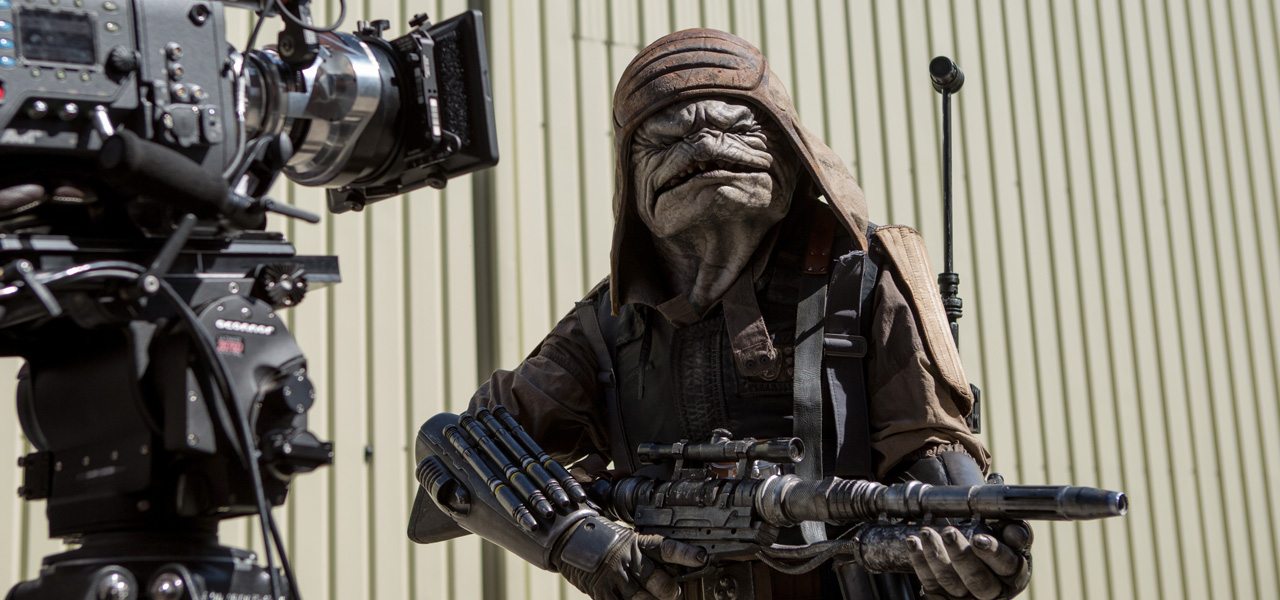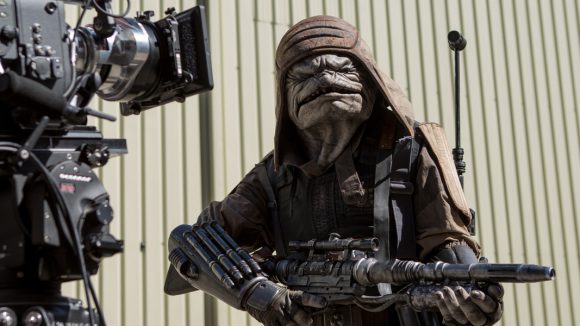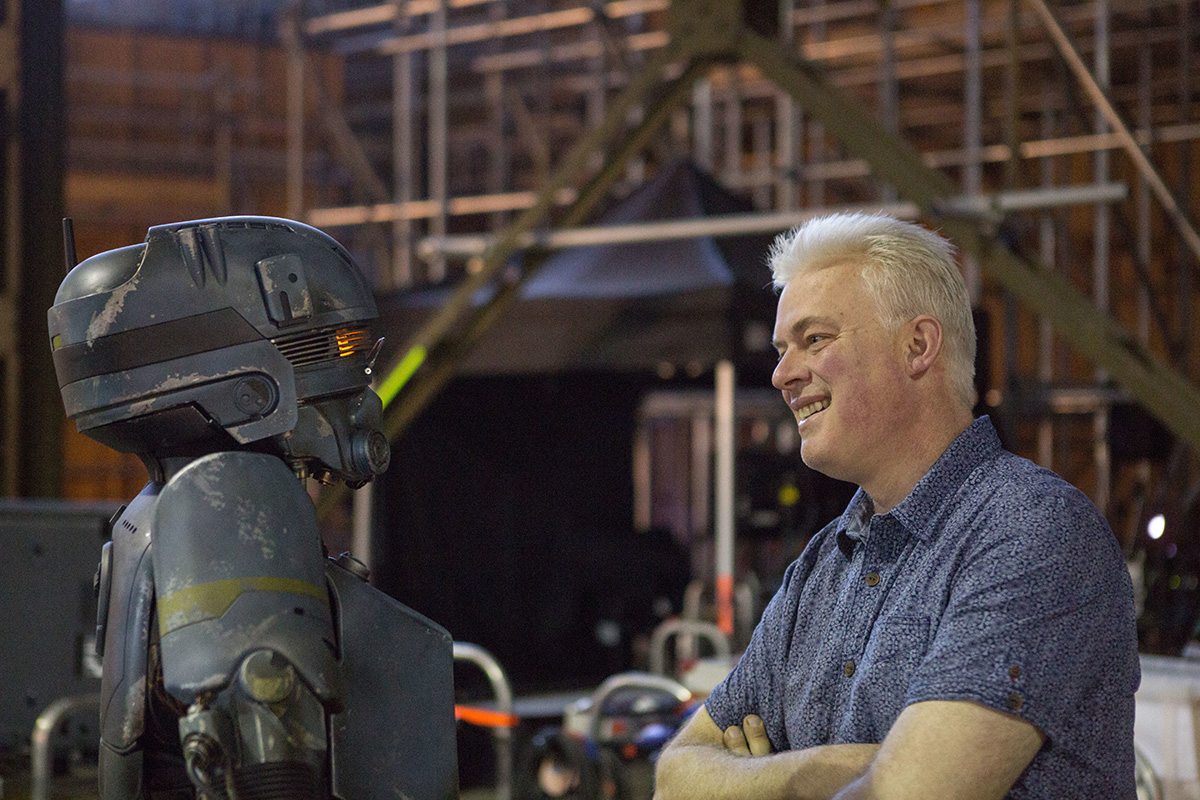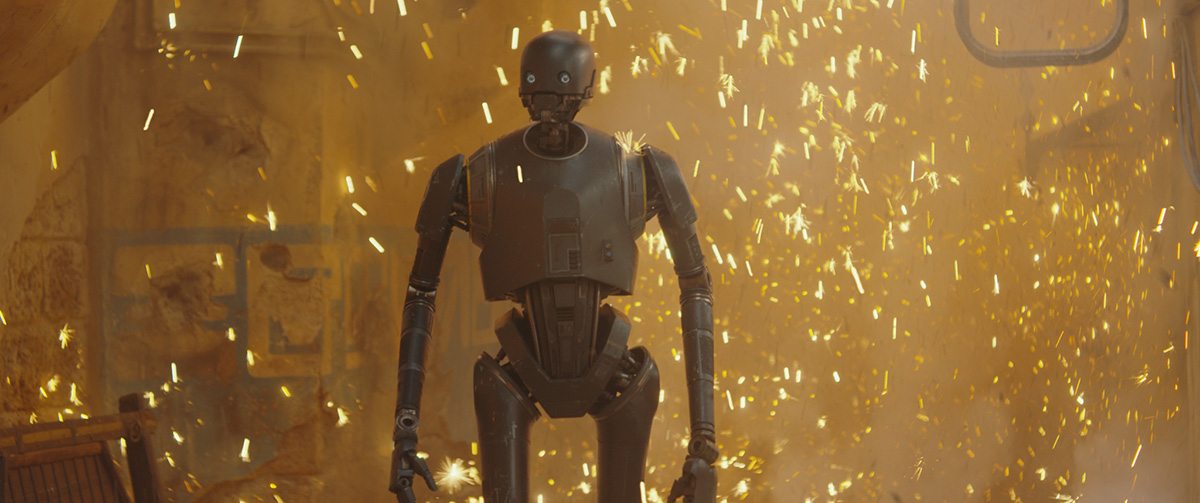

‘Rogue One’’s Creature Effects Supervisor on the Future of Practical and CG Collaboration
Much has been made in recent times of the death of beloved practical effects and the growth of cg in film. Some feel that cg has taken over, looks less believable, and has less emotional impact.
So it’s refreshing to hear comments from Rogue One’s experienced creature effects designer, Neal Scanlan, in how practical effects and digital techniques can (and already do) co-exist.

Scanlan said, in an interview released by Disney, that the effects in Rogue One are “interesting because there is a combination between the practical and the digital technology to remove things, not necessarily to replace them, but to remove them.”
“It allowed us to think of characters a little more outside the box,” he added, “and to say, ‘Does it matter if we might see part of that character’s head?,’ because this is a great design and Gareth [Edwards (the film’s director)] wants this to look a certain way.”
Of course, Scanlan has been collaborating with his digital effects counterparts for years already, notably on the last Star Wars, film The Force Awakens. Here, the spherical droid BB-8 was sometimes seen in the film as a Scanlan puppet and sometimes as an Industrial Light & Magic digital creation, as well as a mix involving the removal of supporting rigs, wires, and puppeteers.
But Scanlan is keen to go even further with that idea of building a creature practically and then augmenting it digitally. “It’s one I hope to explore more and more, where the two techniques come together,” said the creature effects designer.
“Where you can practically bring a significant amount of a character to the screen, but you can push in further than maybe the audience is used to by having the help of the digital world. I don’t think that’s been fully explored yet. I think there’s a lot of things that can be done in the future that will make for some extraordinary characters.”
That practical/digital collaboration in a finished character extends also generally to creature design, owing to the involvement of Scanlan’s team of concept designers. A notable example is the reprogrammed Empire droid K-2SO. Although motion capture and cg were used to make the final character, Scanlan was very much a part of its creation and had to explore the look and behavior early on.

“We had to think, What is the body language of K2?,” Scanlan said. “That allowed us then to start to play with [the idea of] what would be the Empire alternative to C-3PO? As a piece of military hardware, it drove us towards this character that was obviously tall, very stealth like, had very long limbs and able to cover ground very quickly but also to have an indifferent attitude.”
K-2SO was performed on set by actor Alan Tudyk wearing a performance capture suit and occasionally a set of stilts, and then animated by ILM. For more on how the robot was brought to life in Rogue One, stay tuned to Cartoon Brew for an upcoming interview with ILM’s animation supervisor Hal Hickel.

